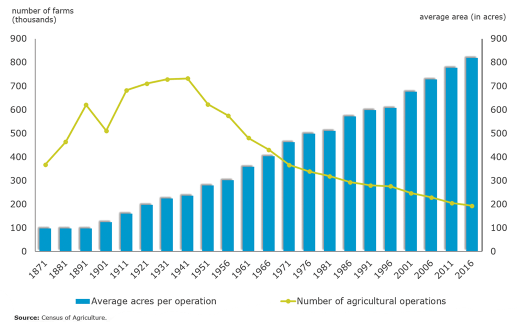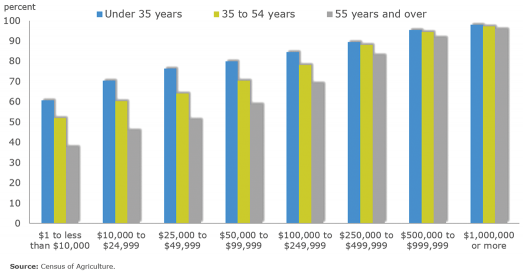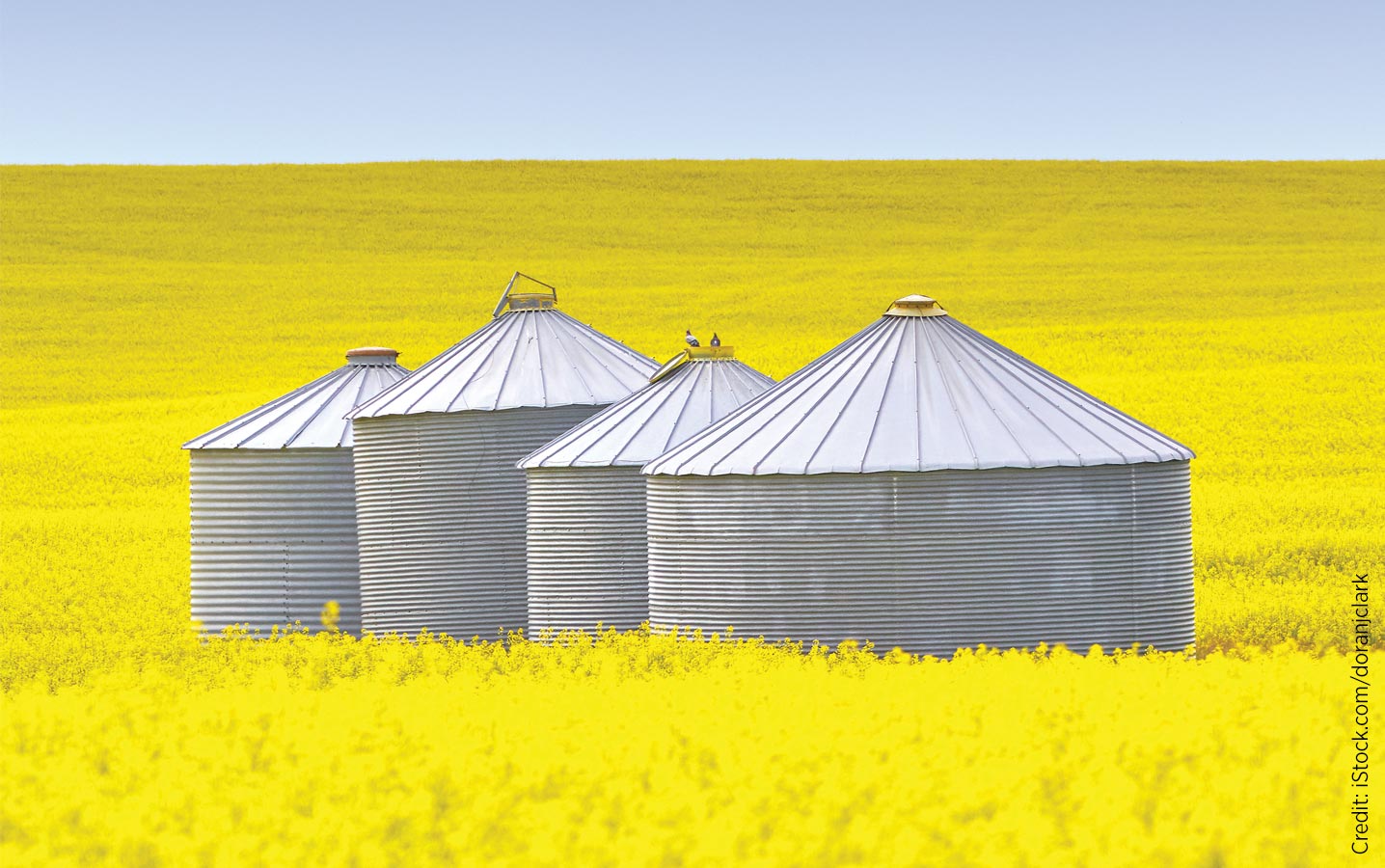Talking Stats
The business of farming in Canada has evolved significantly over the past few decades and with that has come the demand for operators to be skilled in business management, technology and, more and more, agricultural sciences.
The projected 2.3 billion growth in world population by the year 2050 reflects a 70 per cent increase in food demand. This ‘need to feed’ will require maximizing efficient use of land and resources, with best practices informed by accurate and thorough information.
To do its part, Statistics Canada (StatCan) is working to integrate data from multiple sources, reducing the current burden on farmers and resulting in more relevant and timely dissemination of this information. Last November, a presentation and panel discussion was held in Winnipeg to highlight the new ways this will be accomplished.
As part StatCan’s Talking Stats initiative, Anil Arora, the agency’s chief statistician, presented ‘Canadian agriculture: evolution and innovation’ at the Winnipeg event. Arora provided an overview of Canadian agriculture in a global market, the socioeconomic changes of 21st century farms, innovation in an evolving industry and the opportunities moving forward.
Canada is a world leader in agriculture
With quality products, an excellent branding position and strong trade relationships, Canada holds a leading position in global agricultural production and export. In 2014, Canada ranked first in production of canola, lentils, dry peas and maple, and ranked fifth globally for agriculture export value.
From 1996 to 2016, Canadian exports grew from $11.5 billion to $28.1 billion. The U.S. has always been our largest trading partner, accounting for approximately 30 per cent of the total value. Total exports to China in 2016 were $4.3 billion.
Strengthening trade relationships is vital to the Canadian economy. When considering all parts of the value chain, the ag sector contributed 4.6 per cent of the gross national product in 2013. By province, this percentage was as high as 13.5 per cent in Saskatchewan and 10.3 per cent in Manitoba. Maintaining this level of production going forward will required informed shifts in production practices.
Want to talk stats? StatCan Talking Stats presentations and details about this year’s events can be found at: statcan.gc.ca/eng/events/talkingstats.
Portrait of a modern farm
While the number of farmers steadily decreased and farm size steadily increased since 1971 (and before), productivity in Canadian agriculture increased by an average of 2.8 per cent per year in that time.
Farm business structure has also evolved. In the ‘70s, nearly all farming operations reported as sole proprietorships with only 2.2 per cent reporting as corporations. In 2016, one in four farms were incorporated with 89 per cent of those reporting as family corporations.
Cash receipts have increased alongside farm debt. As the debt ratio has increased, interest relative to income has decreased, making debt comparatively more affordable.
Farmers continue to invest in their business with an overall five-year increase of 31 per cent by 2015 and an annual capital investment per farm of $133,887. In 2016, the value of equipment and machinery per farm was $278,405.
The average price range of farmland on the Prairies in 2016 was $1,210 to $9,580 per acre. As prices rise, land ownership decreases. Rented land now accounts for over 25 per cent of farm area. Access to new land through renting may be limited, relying on long-term relationships with the older demographic of land owners.
Larger farms have more year-round employees and the over-all number of full-time and part-time workers has increased while the number of temporary workers has decreased.
Canada has recently experienced a significant generational shift, with more seniors than children in the 2016 general population. Comparatively, farmers are even older with 55 per cent of agriculture operators being 55 years and older. On that theme, in 2016 only 8.4 per cent of Canadian farms reported having a written succession plan.
The use of technology is reported by 66.3 per cent of farms as a means to grow more on less land. On smaller farms, the use of technology is more prevalent among operators under 35 years old. On the largest farms, technology use was very high and was equal among the three age groups: under 35, 35-54, and 55 and over.
Fewer farms, but they are larger

What ‘technology’ are they using?
Canadian farmers are innovating in all aspects of their business – product, process, organization and marketing. Surveys have found increased use of GPS, soil sample monitoring, drones and new methods of reaching consumers.
Technology is allowing farmers to manage larger operations. The proportion of farms reporting use of automated steering, GPS technology and GIS mapping significantly increases as their relative cropland acreage increases.
Research in crop genetics and new crop varieties have also expanded the growing area for some crops. For example, earlier-maturing soybeans that tolerate cooler climates have resulted in a steady increase in soybean acres in both Manitoba and Quebec since 1996.
Livestock operations are also getting larger and more productive. Total Canadian milk production in 1981 was 7.3 million kilolitres from 1.8 million cows. By 2016, production was 8.4 million kilolitres from 939,071 cows. That is a 15 per cent increase in production with approximately half the number of dairy cows.
On large farms, older farmers are as likely to use technology

New ways to collect data
StatCan in partnership with Agriculture and Agri-Food Canada are developing innovative ways to produce and collect data without contacting farmers. This model is based on three data sets: satellite data; agro-climatic data; and historical yield estimates. This moves past a survey-first approach to reduce the burden on farm operators.
Another alternative source of information would be crop insurance data. This provides a high level of accuracy with 70-98 per cent of crops covered, varying by type and province. Agreements are already in place as insurance data has been shared with StatCan since 2015, however this would rely on ongoing agency partnerships.
Trend in output, input and productivity in Canadian agriculture, 1961 to 2013

A Talking Stats panel on challenges and opportunities
Also at the Winnipeg Talking Stats event, Bruce Burnett with Glacier Farm Media, Derek Brewin with University of Manitoba and Patty Rosher with Manitoba Agriculture participated in a panel to discuss concerns around climate change, demographic shifts, data ownership, public trust and the increased demand for knowledge transfer that lies ahead. They also discussed the potential for new methods of data collection.
They agreed that there should be a continued commitment to and investment in innovation with increased focus on knowledge transfer and communicating the return on investment for agricultural research. As global demand increases, innovation will have to be properly placed with affordable technologies and will have to become cheaper over time.
One example of future innovation includes nano-satellites, launched in clusters to provide real-time, hi-res imaging which, when combined with crop insurance data, could be an opportunity for yield monitoring at the field level. Another would be crowdsourcing to mitigate gaps in crop insurance data. If viable, these innovations would be helpful to the industry, crop insurance sector, StatCan and end consumers and provide significant opportunities for investment and development.
Movement away from surveying and toward more passive information gathering does raise questions around privacy issues. However, satellite data is used as part of a model and not on its own. Satellite info without the ground-truth data that surveys and crop insurance information provides would be meaningless. Surveys will not end entirely as losing available data would be out of the question.





